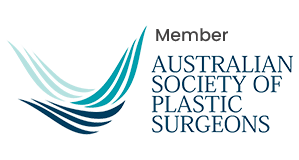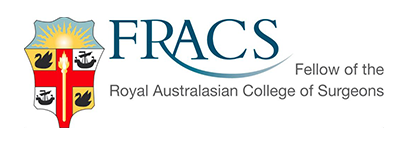Plastic Surgeon-Led Care for Selected Non-Melanoma Skin Lesions
Australia has one of the highest rates of skin cancer in the world, and early treatment plays a vital role in both health outcomes and cosmetic preservation. At our Perth clinic, Dr Nathan Stewart, Specialist Plastic Surgeon, offers CO₂ laser treatment for selected non-melanoma skin cancers and precancerous lesions, including superficial basal cell carcinoma (sBCC), actinic keratoses, and Bowen’s disease.
Using the advanced Lumenis AcuPulse™ fractional CO₂ laser, Dr Stewart delivers targeted ablation of abnormal skin tissue, offering a non-invasive alternative to surgery in appropriate cases. Where surgery is required, both treatment modalities are available in one clinic—ensuring continuity of care under one qualified specialist.
Laser treatment may be suitable for:
*Please note: laser is not suitable for invasive squamous cell carcinoma, nodular BCCs, or melanoma. A skin biopsy or dermoscopic assessment is required prior to treatment.
The CO₂ laser works by delivering focused energy to vaporise abnormal cells with high precision. Unlike surgery, which requires incisions and sutures, laser treatment gently ablates affected tissue with minimal impact on surrounding healthy skin.
Benefits of CO₂ Laser for Skin Cancer:
The AcuPulse™ laser allows real-time visual control, enabling accurate treatment depths based on the lesion’s characteristics.
All patients undergo a clinical skin examination by Dr Nathan Stewart, which may include dermoscopy and/or biopsy to confirm diagnosis and assess the lesion’s depth and subtype. Only suitable superficial or in situ lesions will be considered for laser ablation.
While laser can offer excellent outcomes for selected lesions, surgical excision remains the gold standard for:
Dr Stewart can offer both laser and surgical options, depending on what’s safest and most appropriate for your case. In many instances, laser may be used as part of a multi-modality approach, refining surgical scars or treating residual changes post-excision.
Beyond cancer control, one of the key benefits of CO₂ laser is its ability to preserve aesthetic outcomes. Particularly for visible areas such as the face, nose, chest or scalp, laser treatment can help reduce the risk of scarring and offer more seamless blending with surrounding skin.
Dr Stewart also uses fractional laser technology to assist in scar refinement for patients who have previously undergone excisional surgery elsewhere.
For certain low-risk, superficial skin cancers like sBCC or actinic keratoses, laser ablation may provide comparable outcomes. Surgery remains the gold standard for deeper or more aggressive lesions.
Laser ablation for proven non-melanoma skin cancers may be eligible for a Medicare rebate, especially when performed by a Specialist Plastic Surgeon. A referral and clinical diagnosis are typically required.
Initially, the area will be red and crusted. Over 1–2 weeks, it heals to reveal smoother, less visible skin, often with minimal scarring compared to traditional excision.
In most cases, yes-especially when the diagnosis is uncertain or the lesion is newly identified. A biopsy confirms the type and depth of skin cancer to ensure the treatment is safe and appropriate.
Yes. If several actinic keratoses or superficial skin cancers are present, multiple lesions may be treated in a single session, based on your treatment plan.
Absolutely. CO₂ fractional laser is often used for scar revision, helping to reduce redness, improve texture, and promote collagen remodelling following skin cancer surgery.
As a Specialist Plastic Surgeon with hospital appointments at Royal Perth Hospital and Sir Charles Gairdner Hospital, Dr Stewart brings both surgical precision and ethical, patient-centred care to each case. All treatments are based on current evidence and delivered in a fully accredited medical setting.
Whether your skin cancer requires laser therapy, surgical excision, or both, you can access expert advice and treatment from a single trusted source.
Affiliations




If you’ve been diagnosed with a superficial skin cancer or have a lesion of concern, we invite you to book a consultation with Dr Nathan Stewart.
A thorough assessment will determine if CO₂ laser treatment is suitable for your lesion, and all available options—including surgery if needed—will be discussed transparently with you.
Enquire today to arrange your skin cancer assessment and explore your options.